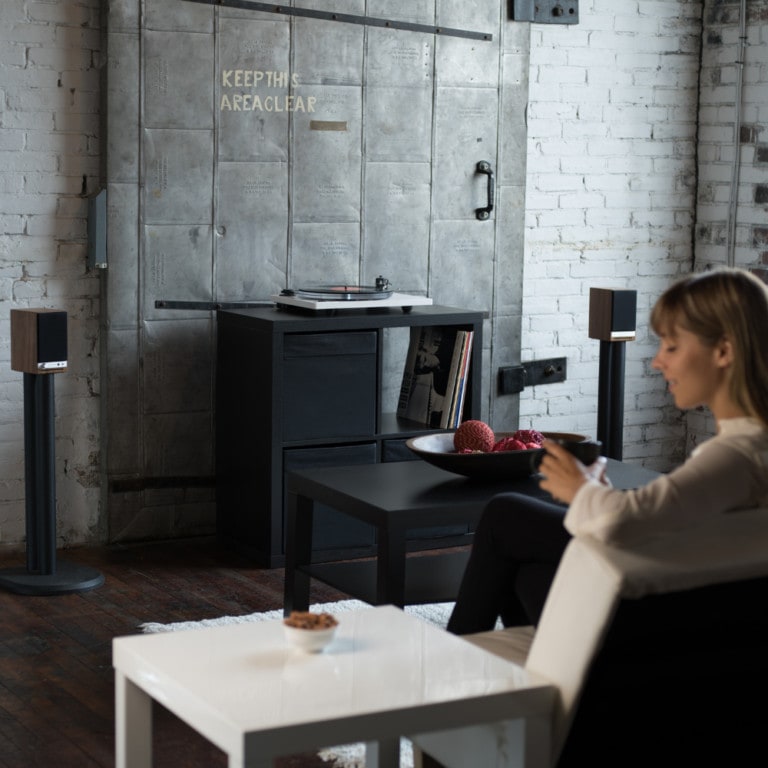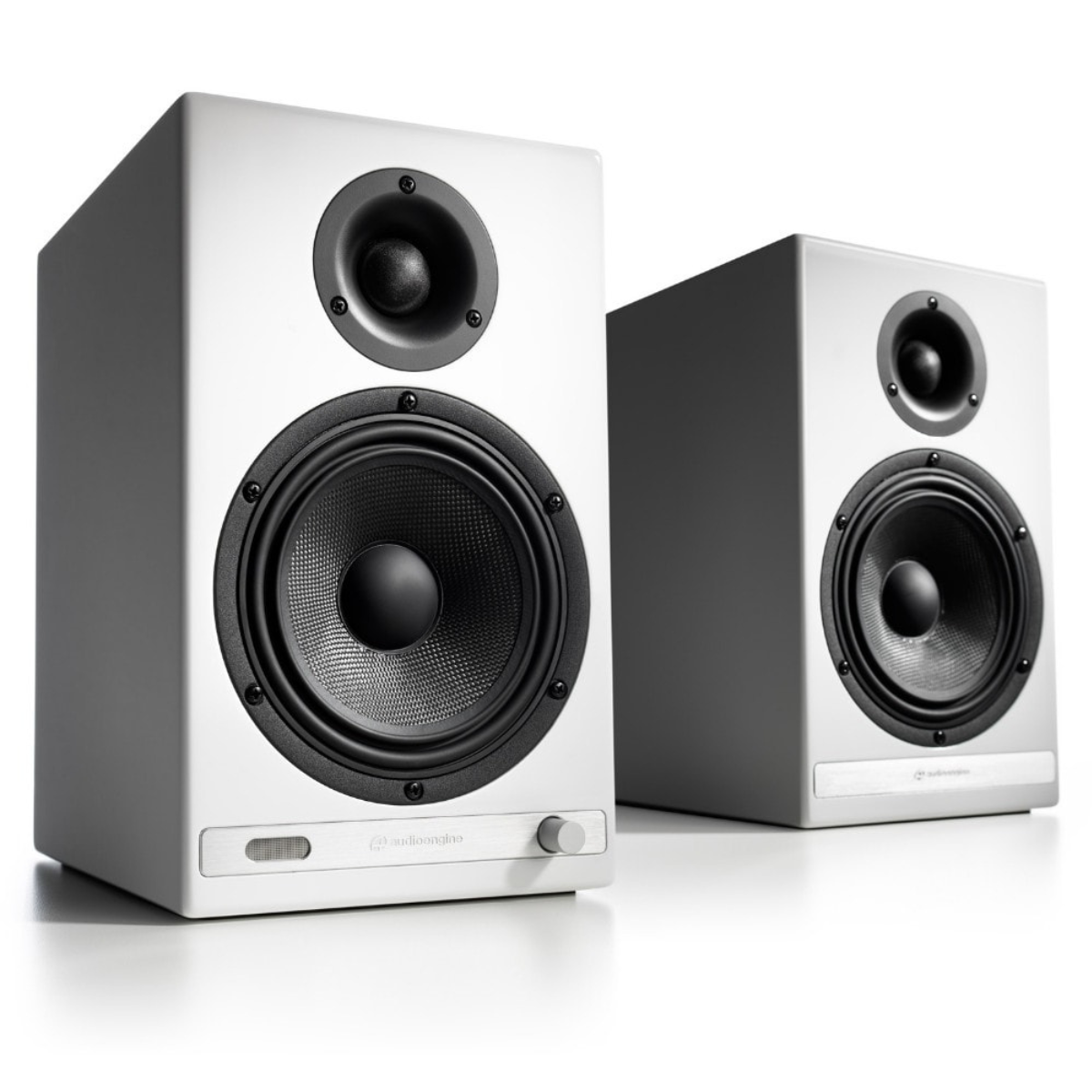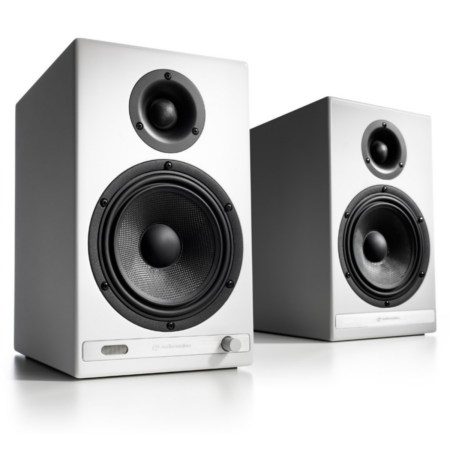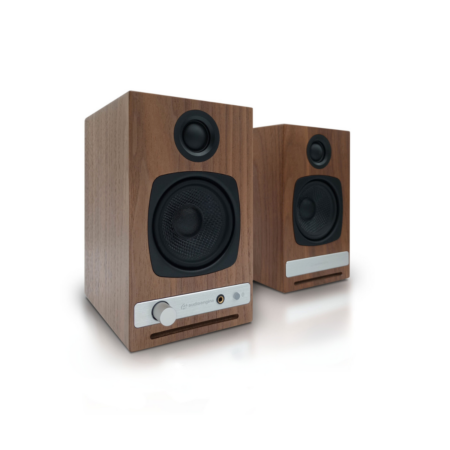http://www.amazon.com/gp/product/B008GOP79G?keywords=isoacoustics&qid=1453940727&ref_=sr_1_1&sr=8-1
HD6 Home Music System w/Bluetooth aptX-HD
Pro Tip Improve your home theater sound with the HD6 by using Bluetooth or optical input. This approach bypasses inferior audio components in your source device, enabling the HD6's built-in DAC to deliver superior audio quality.
$699
Enter your postal code to estimate delivery time from Texas:
Frequently bought together
Frequently bought together





Best Use:
Ideal for:

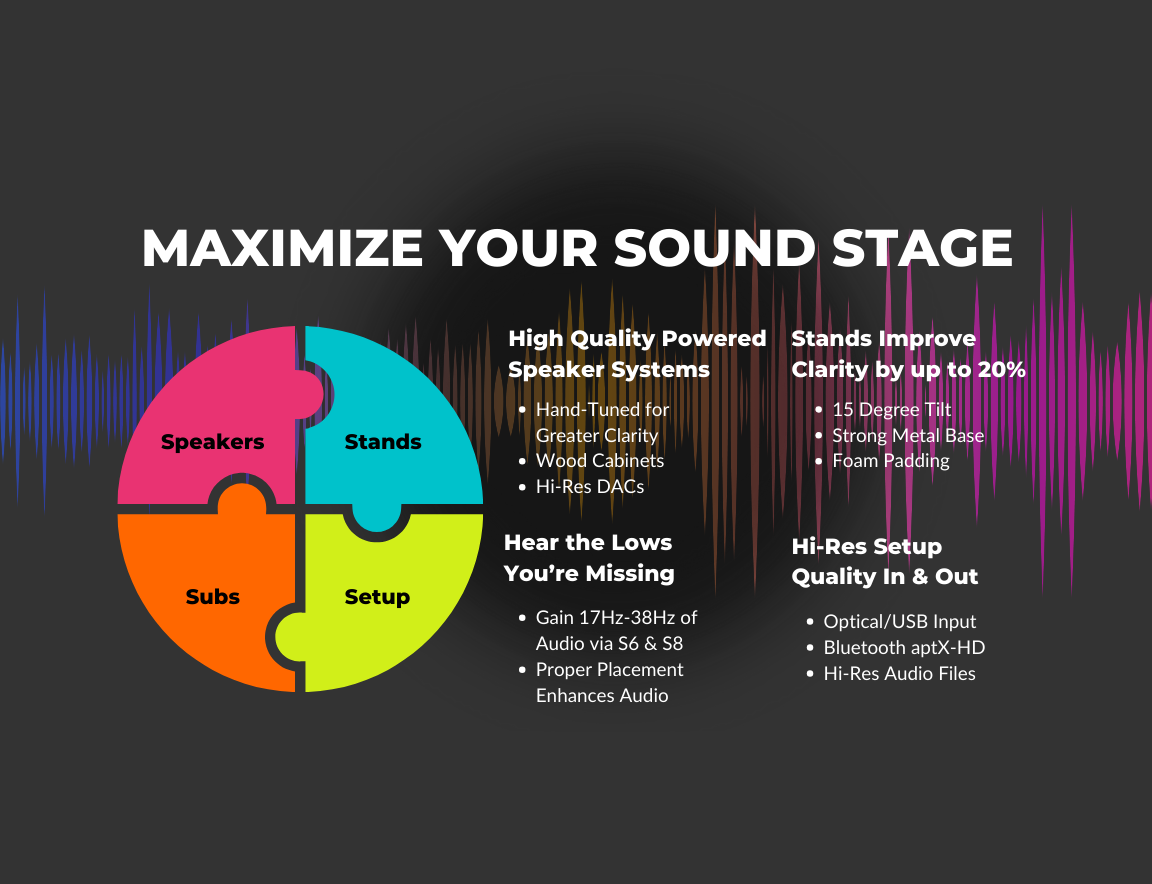
Maximize Your Sound Stage
Get more music out of your sound stage by adding stands, subs, high quality connections and Hi-Res audio files to your home music system. Stands are proven to add as much as 20% more audio, while a subwoofer can add up to 38hz you're not hearing without them. Learn more about sound stages here.
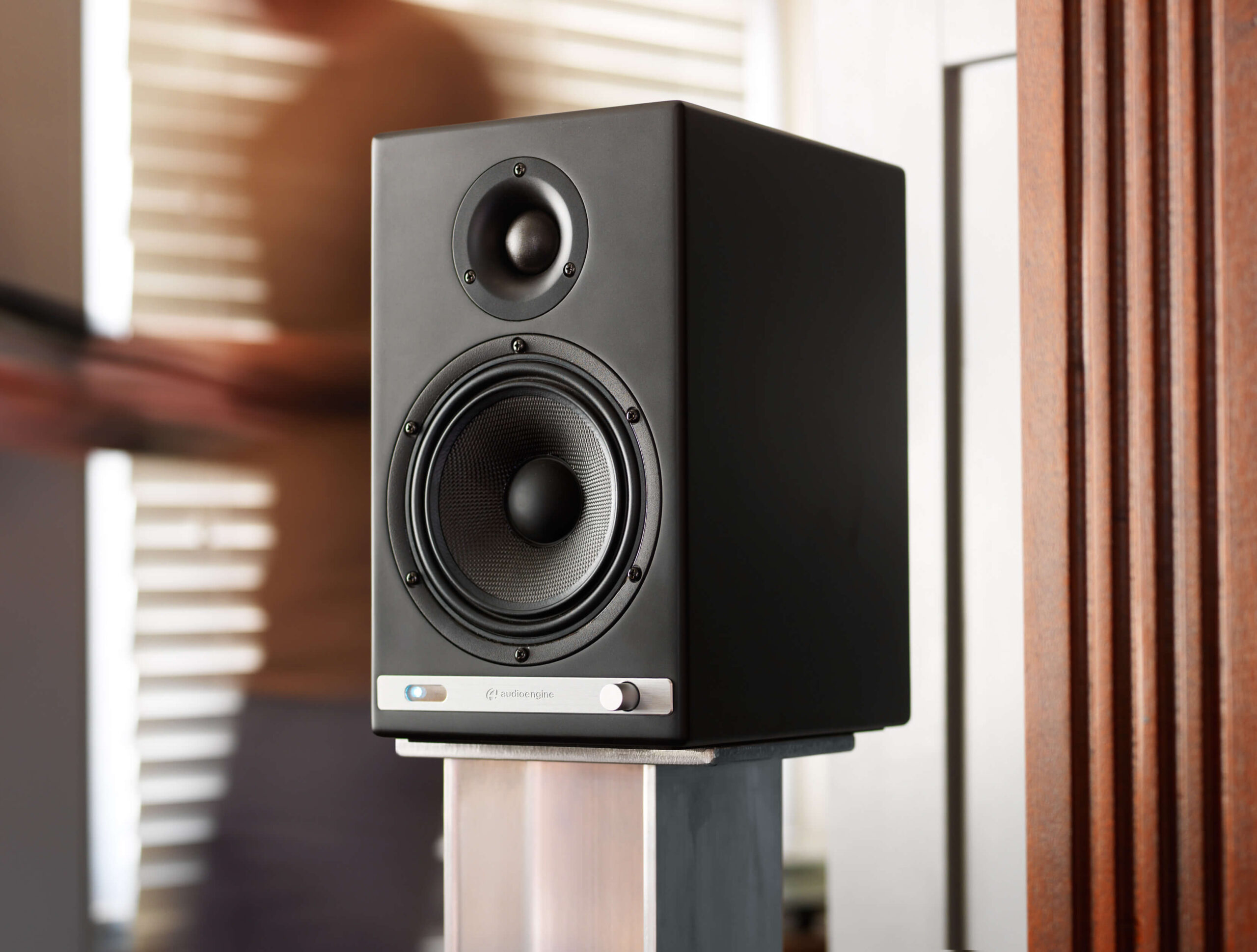
You Don't Listen to the HD6, You Become Immersed in Them
A great music system starts with great components—and the HD6 is made of nothing but the best. Aramid fiber woofers, silk tweeters, high-fidelity aptX-HD Bluetooth, and built-in power amps wrapped in precision tuned, hand-crafted cabinets. We designed the HD6 as a main TV room system but this is one music system that can handle just about anything you throw at it.

Bluetooth aptX-HD: Better Sound, Better Range
Plug in your HD6 Home Music System and you're going to hear some amazing sounds. But connect via Bluetooth aptX-HD and you'll hear amazing sounds with extended range that gives you room to move. Plus, Bluetooth aptX-HD works with all your apps and streaming platforms, like Tidal, Spotify, Pandora, and more. Whether you keep the cord or cut it, the HD6 always delivers fantastic sound.
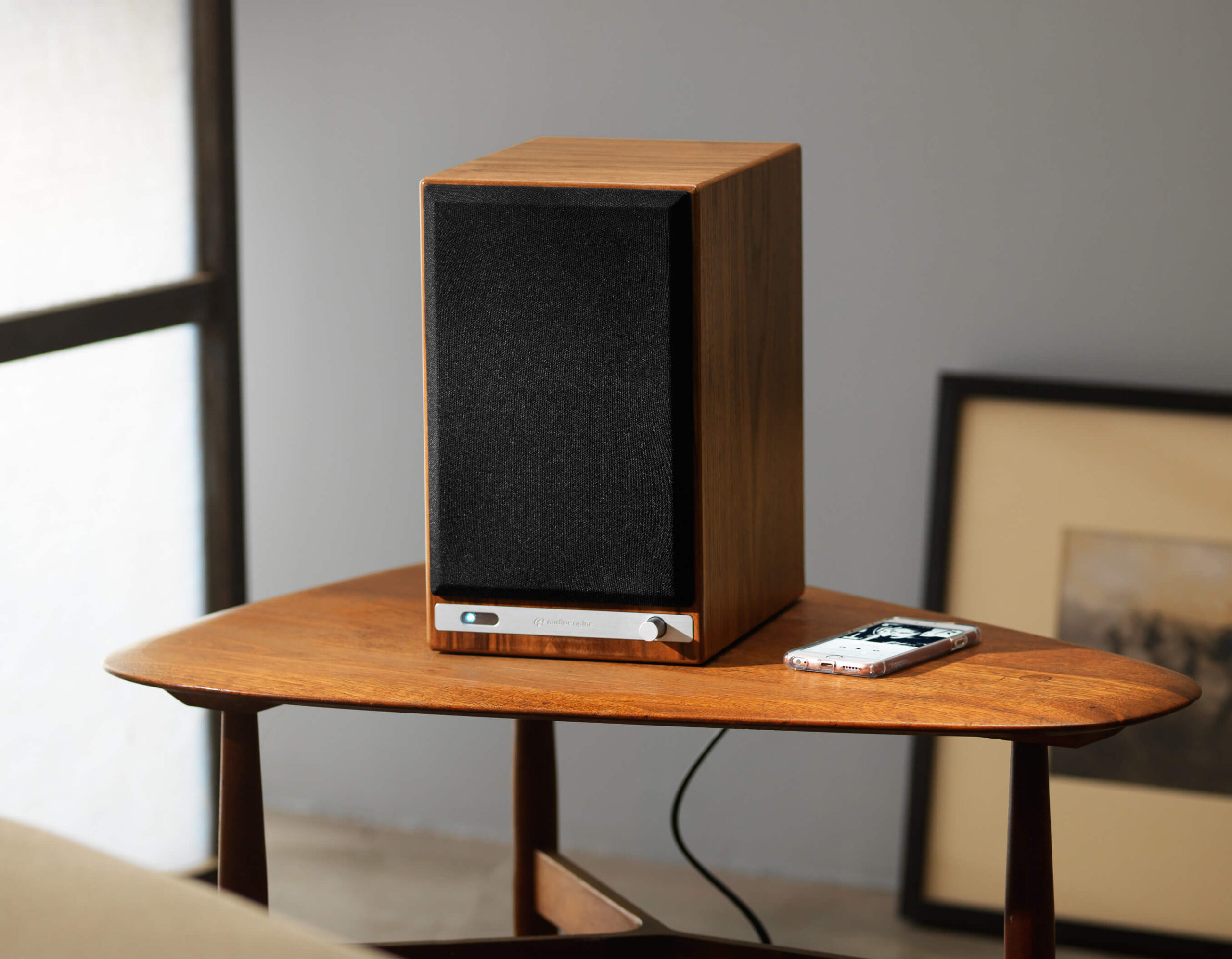
Just a Few Reasons to Join Team HD6
- High-end sound wrapped in hand-built wood cabinets
- Simple setup: no receiver needed, no network setup, no passwords, no hassle
- Optical audio input, great for connecting to your TV audio
- Easy wireless connectivity with extended-range aptX-HD Bluetooth, for great sound and range
- Subwoofer output, which works great with our S8 Powered Subwoofer
- Solid metal remote control
- Magnetic speaker grille crafted from high-quality materials, looks good on or off
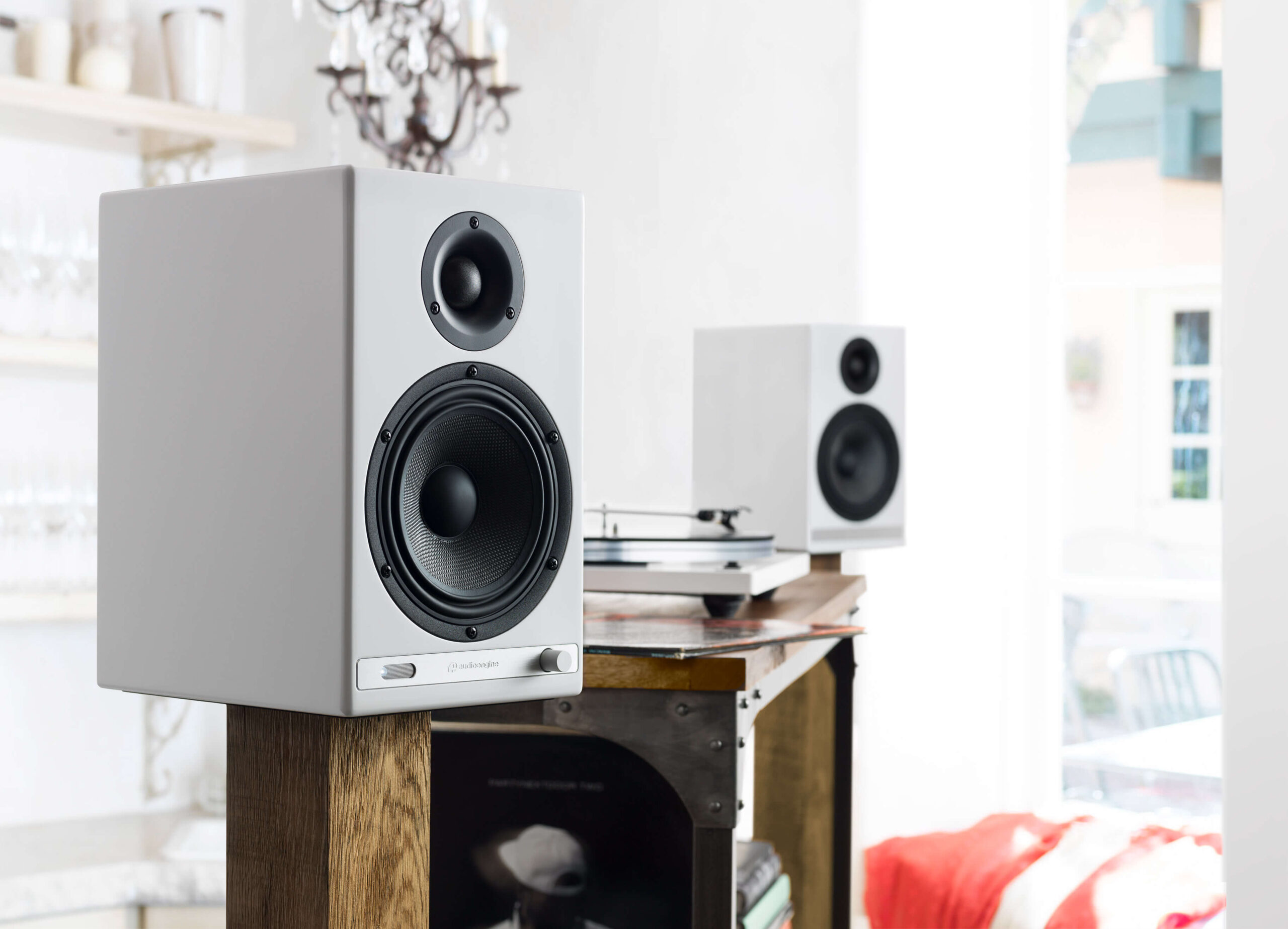
Save Your Strength for the Dance Floor
Nobody wants to spend their time setting up their music system. With the HD6 Home Music System, setup is quick and easy. Want to connect your turntable? TV? Go for it. It just takes a minute or two. Plus, there’s no network setup or passwords to enter. Setup is so simple and easy, the only thing you’ll have to spend time on is your playlist.

Tech Specs
What's in the box

Questions & answers about the HD6 Home Music System w/Bluetooth aptX-HD
1. Turn Off and Unplug:
- Make sure your system is turned off and unplugged.
2. Dust the Surfaces:
- Use a soft, dry cloth to wipe away dust.
- For hard-to-reach places, use a soft brush or a can of compressed air.
3. Wipe Down the Exterior:
- We do not recommend using any solvents
- If cleaning off stains or build-up is necessary, we recommend doing so with a very small amount of mild cleaning solution applied only to the affected area, followed by quickly wiping the area dry completely.
- Any scoured pads or objects like a 'magic eraser' too easily run the risk of removing sealers and top coats of the painted finish that can leave a clearly visible change in the uniformity of the paint/finish
4. Clean the Speaker Grills:
- The speaker grills can be gently cleaned with a vacuum, preferably using a soft bush attachment.
- A lint roller can also be used.
5. Clean Buttons and Knobs:
- A dry cloth is recommend for cleaning any knobs, buttons or other surfaces
- Be careful not to let water get into any gaps.
6. Clean Ports and Connections:
- Use compressed air to blow out dust from ports and connections.
7. Let Everything Dry:
- Make sure everything is completely dry before plugging back in and turning on.
8. Regular Cleaning:
- Dust your system regularly to keep it in good shape.
By following these steps, you can keep your Audioengine system clean and working well.
- The process for replacing a volume encoder begins with pulling the volume knob straight back from the encoder shaft

- Make sure the rubber insert stays with the volume knob -
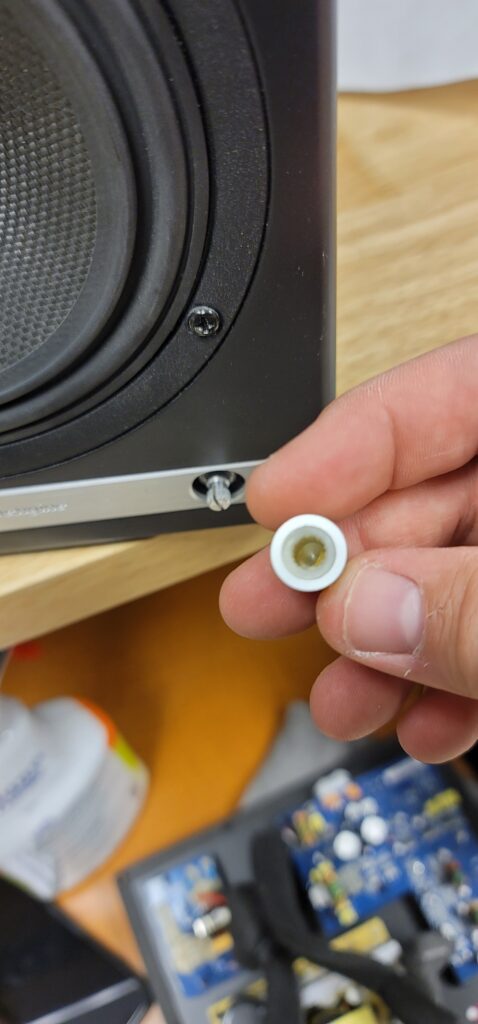
- The volume encoder shaft should look like so before proceeding -
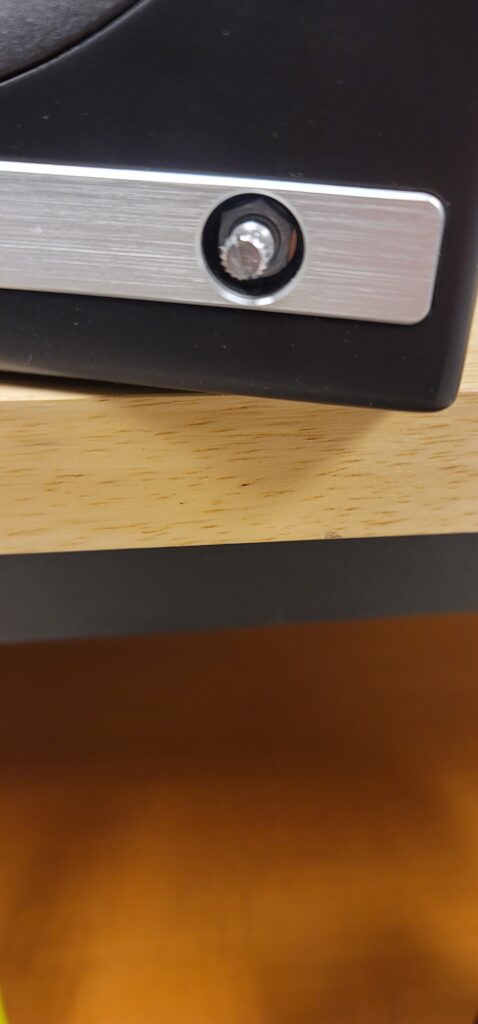
- Using a thin-walled 10mm socket, remove the lock nut fastening the encoder to the front of the speaker cabinet -

- Once you have removed the amp backplate on the back of the active speaker, make sure to remove the encoder wiring terminal clip from the amp circuit board. You can then fully uninstall the encoder assembly by pulling back the encoder shaft from the inside -
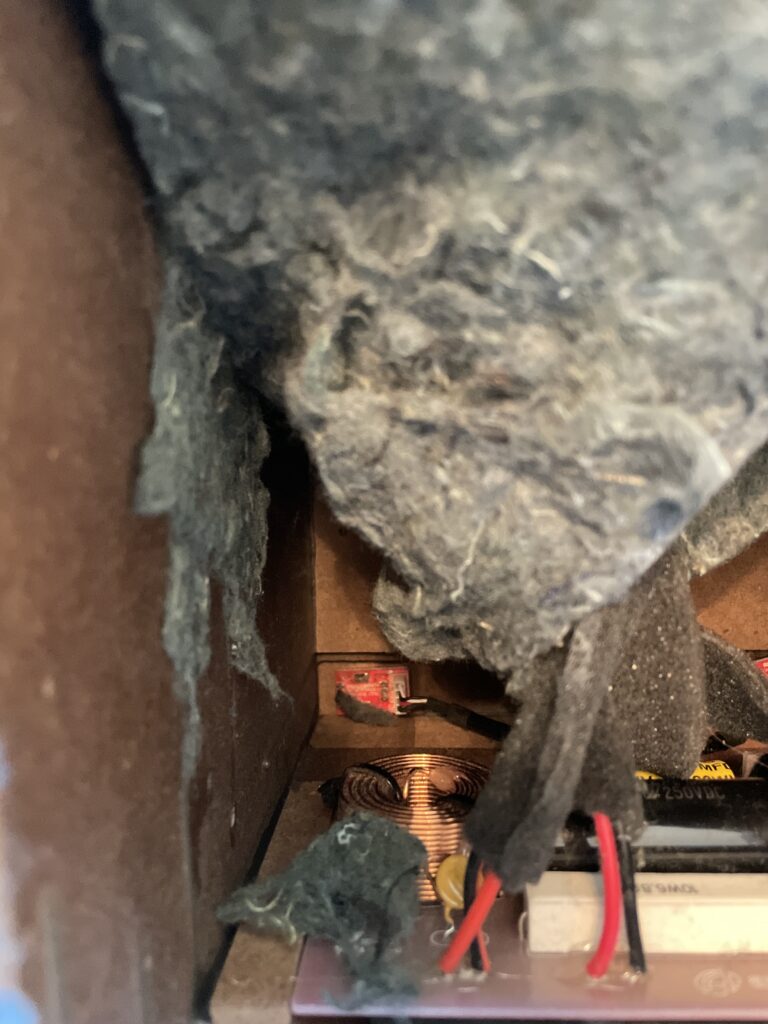
- Finally, the IR receiver can be removed by using a long-necked Phillips PH1 screw driver to remove the 2 screws fastening the IR receiver on the inside of the cabinet -

After fully removing the faulty encoder, the replacement can be installed following these steps in reverse order before finally connecting the wiring clip to the amp circuit board and fastening the amp backplate back onto the active speaker.
The process can be a bit cramped if you wish to do as little disassembly as possible, or a bit easier if you are comfortable moving parts to give yourself more workspace. The sound damping insulation normally overlaps at the bottom of the active cabinet. This can be peeled back similar to the reference picture attached. The crossover is mounted underneath this insulation (If process being done on an HD6) and is perhaps the most obtrusive part when replacing a volume encoder. This has two Philips head screws mounting it to the base of the cabinet along with an adhesive pad to reduce noise vibration. It is possible to remove the two screws and lift the adhered crossover up from the base of the cabinet momentarily to get better access to the IR receiver and volume knob assemblies at the front. If you'd rather not risk damaging anything, the IR receiver can still be unscrewed from the inside of the cabinet with a long-necked Phillips PH1 driver. The volume knob is loosened from the outside of the cabinet with a thin-walled 10mm socket found by pulling the volume knob straight back from the encoder shaft. Ample lighting will also make this work easier
Each Speaker is 11.25"H x 7"W x 10.5"D
All Optical audio is considered a "fixed" output, meaning volume will not attenuate from the TV remote. If you have an HD5/HD6 you can use the Audioengine remote for this. Fo
Absolutely! You can connect any Audioengine speaker with an analog output to any Sonos product that has the Line-In feature. You can also connect any Audioengine passive speakers into an existing Sonos system using the Sonos Amp.
Absolutely! To do so:
- Open the Alexa App on your smartphone or tablet (Apple link | Google Play Link)
- Tap the “Devices” icon and select the Echo/Alexa device you want to connect to speakers
- Select “Bluetooth Devices”
- Select “Pair New Device”
- Find your Audioengine wireless speaker on the list of available Bluetooth devices, and select it
Yes! We incorporate all the relevant functions and features from Bluetooth 5.0 that apply to our products! These features include; extended range, low latency (so that video and audio sync properly), as well as higher level aptX-HD, aptX, and AAC codecs (with the exception of our 512 portable speaker which supports SBC only). Keep in mind that the capability of the source is what controls the Bluetooth experience.
All turntables require a phono preamp stage before connecting to Audioengine speakers. Many turntables have this built-in , while others do not and would require an external phono preamp. Check the turntable manufacturer’s website or user manual. Some turntables may even include Bluetooth, in which case you can pair and connect them to the speakers wirelessly!
For starters, you will need to use a powered subwoofer with analog inputs (either RCA or 3.5mm). Simply connect the subwoofer to the RCA outputs found on the back of the HD6 speakers. If your subwoofer only has a 3.5mm input, you could pick up a 3.5mm to 2-Male RCA Adapter cable to bridge the connection between your subwoofer and the HD6 speakers.
Please refer to the image below, using our S8 as a reference:
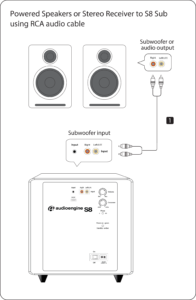
You can absolutely still use the HD6 and it will sound great! AptX is a high-quality Bluetooth audio codec that works really well. In addition to mandatory support for SBC, Bluetooth also includes optional support for many other codecs, like MPEG-1, MPEG-2, MPEG-4, and AAC, all of which have their own advantages, and some of which sound very close to AptX.
No extra software or drivers are needed. The HD6 is compatible with any device that supports Bluetooth, and the A2DP profile for streaming stereo audio. This includes most smartphones, tablets, and computers.
Once your HD6 is paired and connected, then open any app (iTunes, Spotify, Amarra, etc.) - or online players such as Youtube - and it will automatically play your music through Bluetooth once you've selected what you want to hear.
It's pretty easy! Our powered speakers are an all-in-one solution with no extra amps or components needed! All you need to do is unpack the speakers, place them where you want, and then plug in the AC cord. Next, connect the powered speaker to the right passive speaker using the included upgraded speaker wire with banana plug tips. Finally, plug in your music (cell phone, turntable, computer, laptop, etc.) with the supplied cables or via Bluetooth and you're ready to go!
Here is a quick video that can be used as a reference.
(Please note - there is no audio associated with the video.)
Yes they do! They are equipped with a power-saving circuit that turns off the speaker's final stage amp. This idle mode activates right after you stop playing music. Due to this power-saving function, it's perfectly fine for the speakers to stay on all the time!
Audioengine speakers can be easily connected to your TV set as long as there are analog outputs available. Any of our speakers will provide a greatly enhanced TV audio experience with a wider soundstage and better imaging than most sound bars.
Yes! We've been notified that the Android App ZappIR supports the A5+s, so if you have a phone with an IR blaster like the HTC One or the Samsung Galaxy S4 you can use the App to raise or lower the volume of your A5+s or HD6s with your phone!
Even though the HD6 has a built-in Bluetooth receiver, the HD6 are extremely versatile and can be used with a number of different devices, both digital and analog. There two analog inputs, a mini-stereo and RCA input, on the rear panel so you can directly connect any product with a line-level/preamp audio output, such as a turntable. The HD6s also have an optical input that utilizes the speakers' built-in DAC, so any source that has a digital optical output can be used directly with the speakers, such as the optical output of your television or computer.
The HD6 include some pretty significant upgrades over the A5+s. Among these are:
- Larger redesigned woofer with die-cast aluminum frame for extended bass response with fast dynamics
- New larger custom 1” tweeter for an open and realistic high end and an extraordinary soundstage
- Thicker, low-resonance cabinet
- Upgraded crossover components
In addition to the performance related upgrades, the HD6s also feature:
- Bluetooth aptX and digital optical inputs
- Real wood-veneer cabinet finish options
- Removable magnetic grills
- Solid aluminum remote control
Compare Us to the Competition


Fearless
Shopping
- Fast & free shipping
- We pay sales tax, if applicable
- 30-day audition & easy returns
- 3-year warranty & superior support
- Guaranteed smiles
Which Audioengine Speaker System is Right for You?
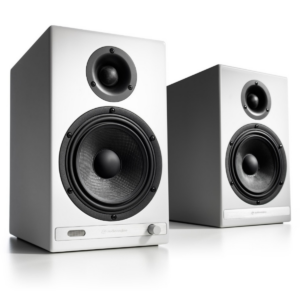
- Wired
- Wireless
- 3.5mm analog
- Bluetooth
- Optical
- RCA analog
- Room
- Rear Ported

- Wired
- Wireless
- 3.5mm analog
- Bluetooth
- RCA analog
- Desktop
- Room
- Rear Ported

- Wired
- Wireless
- 3.5mm analog
- Bluetooth
- RCA analog
- USB
- Desktop
- Room
- Front Ported

- Wired
- Wireless
- 3.5mm analog
- Bluetooth
- RCA analog
- Room
- Rear Ported

We’ve Got Sound Advice for Everyone on Your Gift List
